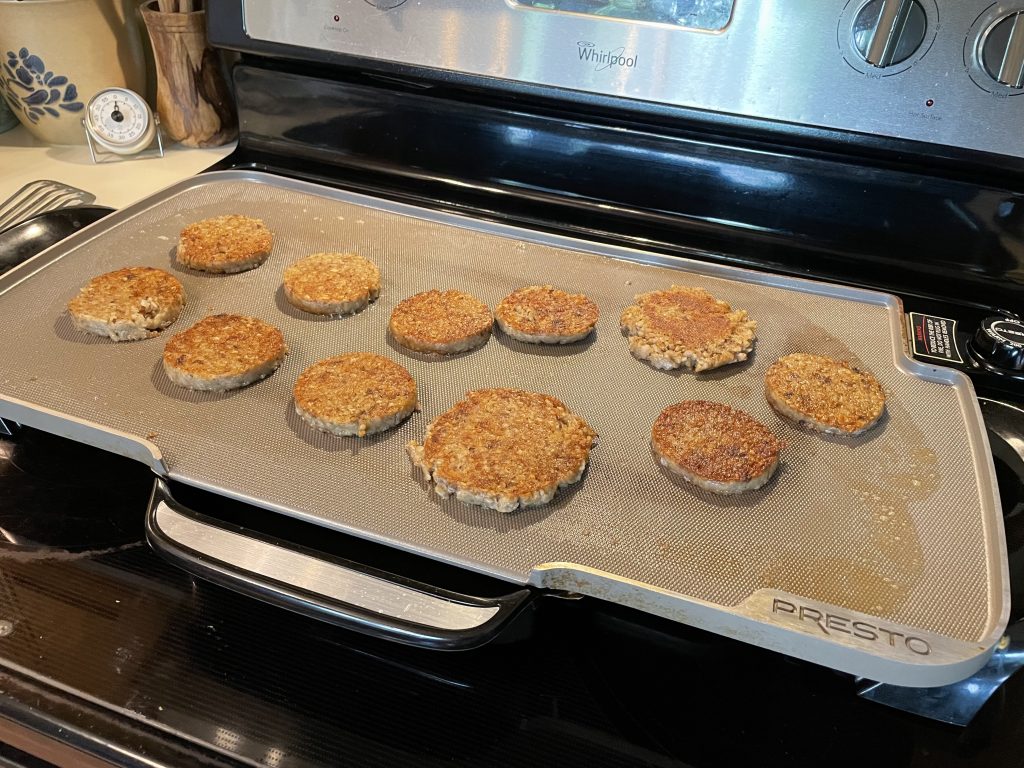During the Lubbock years, my mother was very much the displaced Cincinnati German. Missing the cuisine of her native land-or city, rather-she often sought to recreate it. And in the 1990s, product globalization didn’t extend very far into food, so if you wanted something “ethnic”, it probably wasn’t in the dedicated grocery store isle. Some things we’d consider common today were not ubiquitous then. An example: bratwurst. It seems silly now, but she’d actually pack a carry-on with them on her return trip from visiting family. Brats are delicious.
But what couldn’t be bought pre-packaged left only the option of reverse-engineering. I don’t know if Skyline canned their chili back then, but it certainly wasn’t on shelves in Lubbock, so mom eventually developed a recipe for Cincinnati-style chili-a very bizarre concoction for one living in the heart of Texas. Cinnamon as an ingredient, and no spice? I’m glad she never served it up for any of my native friends (even though it was pretty good in its own right).
And one of her recreations that she didn’t get right, however, was something I’ve only just recently revisited, at the behest of others: goetta. I don’t remember this ever coming in packaged tube form. Instead, they were turned out of those small rectangular metal baking pans. Therefore, they must have been homemade.
Here are the ingredients, from Glier’s’ website-an apparently popular brand:
Pork & Beef, Pork & Beef Broth, Steel Cut Oats, Pork Hearts, Pork Skins, Onions, Salt, Spices, Monosodium Glutamate.
A quick reading of that list reveals its obvious origin: more poor people food. Cheap ingredients added to meat in order to extend it, like Hamburger Helper. Plus MSG, naturally. Something that would be created in some fashion by immigrants lacking the means to acquire more expensive food. Something filling and high-calorie. Something that’s an acquired taste.
Mom’s creations slid out of the pans on their own slime, wiggling as they plunked down onto the plate, where they were unceremoniously slathered in Aunt Jemima. A sticky, sweet, slimy loaf. *Shudder*
Glier’s, on the other hand, was…okay. I wouldn’t buy it myself, but I’ll eat it. Slightly crunchy with a nutty taste, it’s a convenient way to get fiber into a meat dish. Beyond making a bigger serving out of a little meat, it appears to have an alternate nutritional function.
Dwelling on the difference in experiences, here’s what I’ve concluded:
- Cooking method. Just as a meatloaf should never be cooked in the pan, neither should goetta. The pan holds the grease, which in large quantities will make anyone feel sick, but also the oats soaked it up. Grease, which is of course greasy by nature, not only coated the end product, but also reacted with the oats to form a wet glue texture that could have been consumed directly through a toothpaste tube. Glier’s, on the other hand, I sliced into patties and fried directly on the griddle. The grease cooked out and the oats toasted, resulting in that nutty crunchy flavor and texture. Pan frying is the way to go. Not baking.
- The oats. Oatmeal was a recurring breakfast staple, which I also hated due to its similar glue/slime texture. It was homemade, not instant. This generally calls for rolled oats. Greater surface area = quicker cooking and grain saturation. I very much suspect that mom used these same oats for goetta. This no doubt exacerbated the slime factor as steel cut oats would have retained their crunchier texture better.

Conclusion: More and faster grain saturation combined with more of the cooking liquid being fat due to the method of cooking caused over-hydration (fatification?) of the oats, resulting in no crunch and too much grease retention.
Slime.
And the syrup thing was weird, too.

Mom never much appreciated constructive criticism with her cooking, but some minor adjustments would probably have resulted in a much more palatable result. Liking goetta isn’t exactly a life-changing experience for me, but it’s an amusing way to end a decades-long extreme aversion to a particular food product.
–Simon

